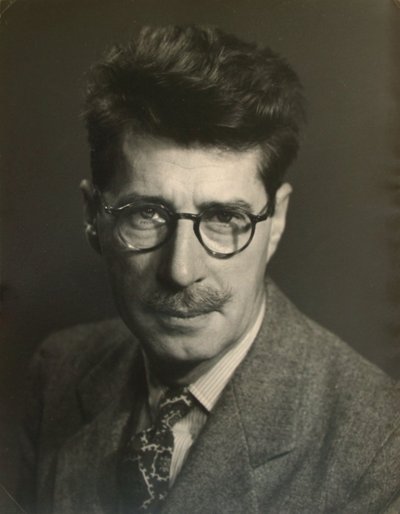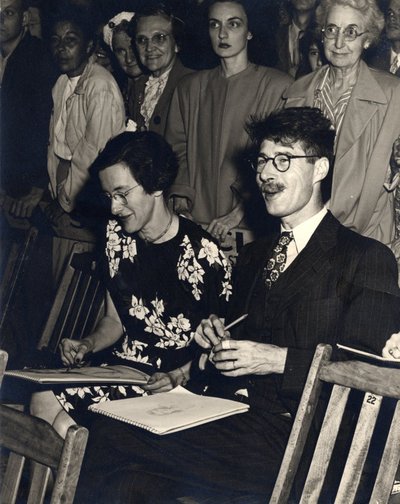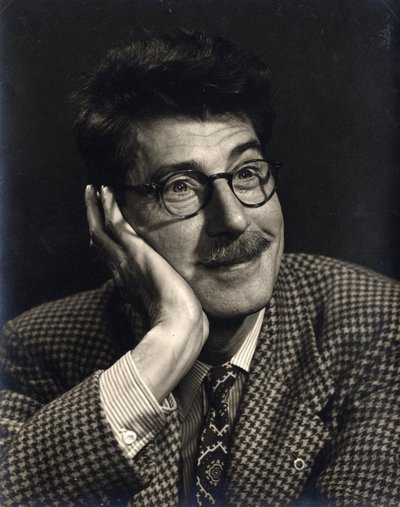Roger Hayward, architect, artist and illustrator, was born and raised in New Hampshire, later attending the Massachusetts Institute of Technology in Boston where he met his wife Elizabeth (Betty) Hatfield. After graduating with a degree in architecture, he began his work as a designer and delineator. He was artistically disposed his entire life, an inclination that was in large part cultivated by his parents, and rose to relative fame in the Boston area as a painter in the late 1920s. In 1929 Roger and Betty moved to California to begin working with an old MIT associate, and Roger eventually went on to design the Los Angeles Stock Exchange, the USC Doheny Memorial Library and many more projects before and after the Great Depression. During the Great Depression and onwards through the Second World War, Roger undertook many odd jobs, including the selling of crafts, the creation of elaborate puppet shows, and contract work as a consultant for various entities, such as wartime optics work at the Mt. Wilson Observatory.
Roger illustrated articles in the “Amateur Scientist” column of Scientific American for twenty-four years, an undertaking that he finally ended at the age of 75 due to failing eyesight. He held ten patents and worked with Linus Pauling, publishers W. H. Freeman & Co. and others to illustrate scientific education texts, contributing to nearly twenty books during his lifetime. Throughout his professional endeavors Roger continued to explore a plethora of alternative disciplines, from archaeology and astronomy to optics and geology. He corresponded frequently with friends on a variety of issues, and was on a constant quest for new knowledge, questions, and answers.
A Renaissance man or woman is a person with outstanding knowledge and skill in a wide range of areas or fields. The term was derived from various philosophies of the Renaissance era whereby humans were thought capable of unlimited potential and thus obligated as conscious beings to develop and learn as much as possible about the world. Leonardo da Vinci is perhaps the most distinguished Renaissance man, but he is joined in recognition with the likes of Francis Bacon, Michelangelo and Copernicus. True Renaissance men and women embrace personal development or the acquisition of knowledge, attainment of substantial professional accomplishments and endeavor for artistic achievement.
Ever in motion, Roger Hayward was a twentieth-century Renaissance man. Though he has been largely forgotten by history, his talent and accomplishments were well recognized during his life, and Roger was asked on several occasions to share details relating to his pathway to success. After subsequent reviews of his life and accomplishments, Roger suggested that the secrets to his success were luck and random circumstance, though his innate curiosity and enjoyment of life were more likely the culprits. In a summary of his achievements, Roger illuminated and acknowledged some of the qualities that made him a true polymath:
“I suppose my greatest asset in illustrating is my wide knowledge in the various sciences so that authors don’t have to do much more than indicate what they want and I can take it from there. Every subject I have become involved in I have tried to do something about as an expression of myself…My mother worried that I was likely to become a Jack-of-all-trades. I have found that I can tackle a wide spectrum of sciences and arts and perform them in a professional way. Where did all the ideas come from? Wouldn’t I like to know! I wish I could offer a clear direction for others to follow but I am as mystified as anyone else. When it rained soup I seemed to have a spoon and not a fork for some unaccountable reason. And it has all been so much fun!”



